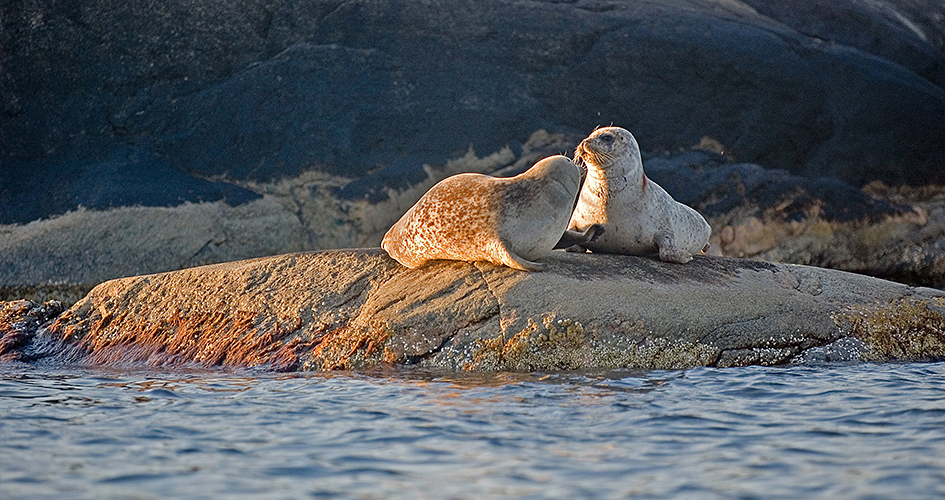 Foto: Bent Frizell
Foto: Bent FrizellThe archipelago
West of the Koster islands there are small islands, low-lying rocks and underwater skerries.
The bottom layer here consists of rock, sand and shell gravel, since the strong wave action has flushed away the finer bottom particles. The water has the proper salinity because it is far from the freshwater flowing out of rivers on the mainland.
Algae
Here in the exposed outer archipelago, large swaths of algae grow, including Sweden’s most well-developed brown algae forests. There are also species here that do not occur anywhere else in Sweden, such as various red algae.
Harbour seals, birds and fish
Swimming around sunken rocks and islets is the North Sea's largest population of harbour seals, and birds nesting here include eider ducks, black guillemots, skuas and the occasional Arctic tern. The more sheltered areas in coves and narrow straits serve as the sea’s nurseries and pantries. Amid the eelgrass and seaweed, small fauna and young fish find both food and places to hide, and predator fish such as cod and eel make their way here to hunt. Shallow, bare sandy bottoms are nursery areas for plaice. In addition, sheltered shallow areas function as resting and nesting places rich in nutrients for birds such as mallards, common goldeneyes, green-winged teals and greylag geese.
Share with your friends
Share this page with your friends on Facebook, X (formerly Twitter), Google+ and e-mail.





